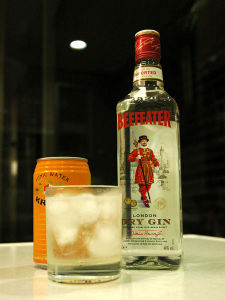An annual re-post -
 Why is the CDC based in Atlanta? Because Georgia was the center of malaria in the US, and elimination of malaria from the US was the CDC's first job. It's hard to imagine, but through the 1940's malaria was endemic in the southern US, and prior to that in the northeast too. Every doc in New England used to treat malaria routinely.
Why is the CDC based in Atlanta? Because Georgia was the center of malaria in the US, and elimination of malaria from the US was the CDC's first job. It's hard to imagine, but through the 1940's malaria was endemic in the southern US, and prior to that in the northeast too. Every doc in New England used to treat malaria routinely.
DDT was a major factor in the elimination of malaria in the US, but it remains a common disease in the Third World, in the southern hemisphere. And, sadly, DDT harms lots of other things, too, besides mosquitoes but probably isn't as evil as Rachel Carson claimed.
The long history of malaria would make a fascinating book. I'll just share a few facts: the germ which causes malaise, fever, and anemia is a plasmodium, a wierd one-celled bug. There are 4 varieties. The vector (meaning the thing that distributes the bug) is of course an anopheles mosquito, which squirts the germ into the human bloodstream with its anticoagulating saliva. The plasmodium reproduces in your red cells, then goes loose in your blood, where it is presumably sucked up by an innocent mosquito who  spreads it further. Humans are the host of this bug (meaning their reproductive home). Like any parasite, the goal is to keep the host alive, while reproducing itself. If you kill your host, you sort of defeat your purpose (like over-taxing productive people), so malaria is more likely to cause chronic illness than death, except in the otherwise vulnerable. Fascinatingly, the sickle-cell trait of Africa confers resistance to malaria. Nature is amazing, which makes being an MD an astonishing privilege.
spreads it further. Humans are the host of this bug (meaning their reproductive home). Like any parasite, the goal is to keep the host alive, while reproducing itself. If you kill your host, you sort of defeat your purpose (like over-taxing productive people), so malaria is more likely to cause chronic illness than death, except in the otherwise vulnerable. Fascinatingly, the sickle-cell trait of Africa confers resistance to malaria. Nature is amazing, which makes being an MD an astonishing privilege.
Prevention is simpler than treatment. Treatments include derivatives of sweet wormwood, as discovered in China in 300, and derivatives of cinchona bark (quinine), as discovered by the Spanish in the 1600s. The quinine treatment/preventative of course gave rise to the finest drink of the British Empire - the Gin and Tonic, which exemplifies the idea of making a virtue of necessity. A Brit will drink nothing without either gin or wine in it. Add a lime and the Limey can prevent scurvy too, as was attributed to Captain Cook. Thus truly a superior medicine for both body and soul.
Does the brand of gin matter? For martinis, yes. For gin and tonics, not to me anyway.


 Why is the CDC based in Atlanta? Because Georgia was the center of malaria in the US, and elimination of malaria from the US was the CDC's first job. It's hard to imagine, but through the 1940's
Why is the CDC based in Atlanta? Because Georgia was the center of malaria in the US, and elimination of malaria from the US was the CDC's first job. It's hard to imagine, but through the 1940's  spreads it further. Humans are the host of this bug (meaning their reproductive home). Like any parasite, the goal is to keep the host alive, while reproducing itself. If you kill your host, you sort of defeat your purpose (like over-taxing productive people), so malaria is more likely to cause chronic illness than death, except in the otherwise vulnerable. Fascinatingly, the sickle-cell trait of Africa confers
spreads it further. Humans are the host of this bug (meaning their reproductive home). Like any parasite, the goal is to keep the host alive, while reproducing itself. If you kill your host, you sort of defeat your purpose (like over-taxing productive people), so malaria is more likely to cause chronic illness than death, except in the otherwise vulnerable. Fascinatingly, the sickle-cell trait of Africa confers
Aávigorous three-houráride this morning - Mrs. Barrister wanted usáto canter most of the time to tire out the horses, and I almost got thrown when a garter snake decided to cross the trail and freaked out the horse - as they always do. You know the sid
Tracked: Jun 09, 17:19
Gin and Tonic, Malaria, and Sickle Cell
Tracked: Jul 16, 06:28
A brief photo history of the church steeple Our Bovine Final ExamThe Difficult Paradox of Conservatism: Seeking Power to Increase FreedomFlying Machines: Summer Fun with Toy AirplanesThe Gin and Tonic, Malaria, and Sickle-Cell
Tracked: Jul 24, 19:47